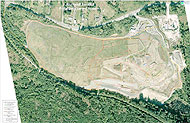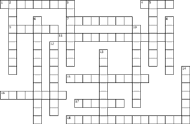Tours & Educational Resources
Regional Landfill - Tours & Educational ResourcesTours
Arrange a tour of the Regional Landfill! Discover how the RDN safely and responsibly manages the region’s garbage and how our Zero Waste approach diverts waste from the landfill.
 |
| Click Here to enlarge |
- Active Face – Discover where your garbage goes and how it is managed.
- Environmental Protection Programs – Learn about how we protect water resources, collect landfill gas and reduce greenhouse gas emissions.
- Recycling Areas – See where yard and garden and wood waste are collected and processed to keep these materials out of the landfill.
Site tours for public groups provided at no-charge.School Tours
Tour content varies according to the grade. Schools are responsible for transportation to and from the site.To book a tour:
RDN Regional LandfillEducational Resources
Ph. (250) 722-2044
Please provide at least two weeks advance notice to ensure availability.
Landfill Crossword
Read this description of the Regional Landfill then test your knowledge by downloading and completing the Landfill Crossword (Landfill%20Crossword.pdf).Educational LinksThe Regional Landfill accepts solid waste from the Regional District of Nanaimo, which includes Nanaimo, Parksville and Qualicum Beach. Both commercial and residential haulers can bring their waste to the site. Residential haulers unload their waste into bins at the drop-off area. Commercial haulers are directed to the active face.Everyone is encouraged to reduce and recycle their waste before bringing it to the landfill. Scrap metal, yard waste and wood waste are examples of materials that are separated from the waste before landfilling. Garbage is dumped at the active face where a compactor drives over it to increase its density and thereby reduce the amount of space it takes up. At the end of the day the garbage is covered with a cover material such as soil to control litter and reduce the opportunities for wild animals to scavenge. Some waste materials such as asbestos are considered controlled waste and need to be handled in a special way to reduce the exposure of people to the waste material. Hazardous wastes are not accepted at the Regional Landfill.
The landfill is constructed to reduce the environmental impacts to water, land and air. A thick plastic liner is placed on the bottom of the landfill and perforated pipes are laid down to collect the leachate for treatment at the wastewater treatment plant. This reduces the impacts to groundwater and surface water. Gas generated in the landfill from anaerobic bacteria is collected for burning or generating energy. The main component of landfill gas is methane which is 21 times more potent a greenhouse gas than carbon dioxide. A clay cover is placed on top of closed portions of the landfill to reduce the escape of the methane. Soil material, including ground wood waste and biosolids, are placed on top of the clay to provide a surface for grass to grow and enable methanotrophic bacteria to capture the methane that seeps through. Methanotrophic bacteria are aerobic bacteria that consume methane for energy.

